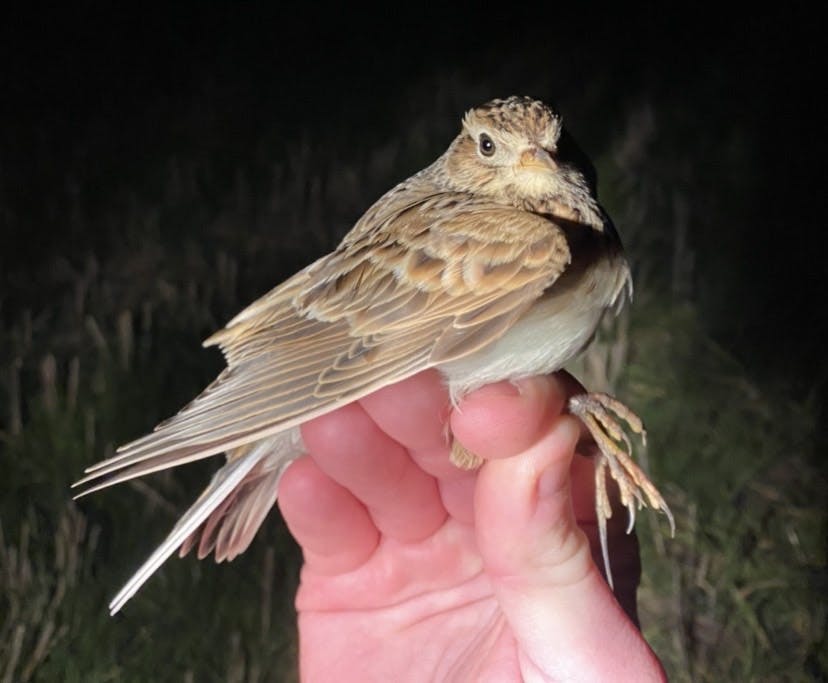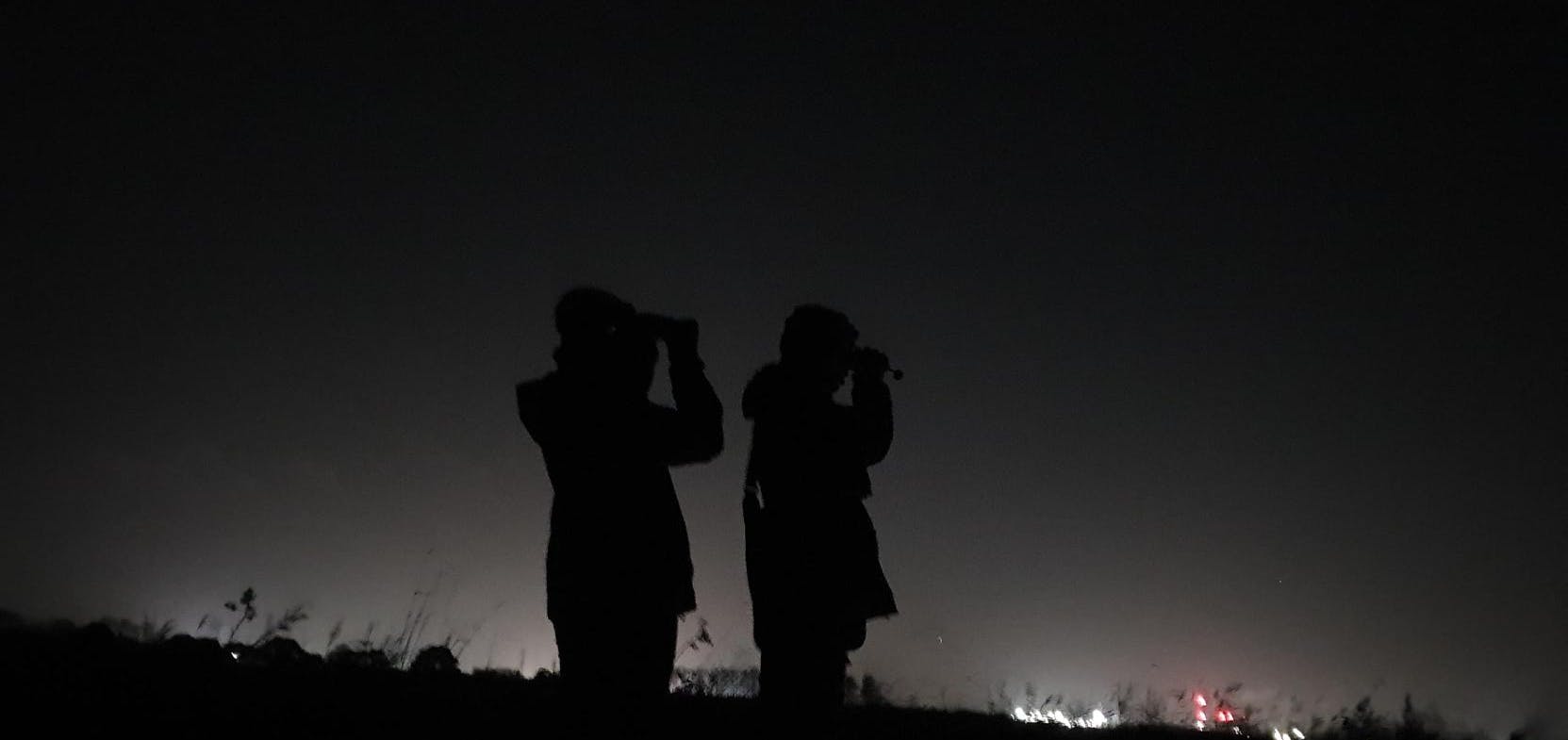Nocturnal Bird Surveys
Over the last couple of months, our ornithologists Chas Holt and David Campbell have been utilising thermal imaging technology to survey a network of grasslands around the Swale Estuary to help understand how they are being used by bird populations at night.
This site is being considered for creation of saltmarsh, an important coastal habitat which can store 2 tonnes of carbon per hectare each year, protect against coastal erosion, and provide important feeding sites for many waders and waterfowl. But first, as part of a feasibility study, we must assess how the change might affect existing wildlife populations.

During winter months many wading bird species will forage at night as well as in the day, with some such as Lapwing and Golden Plover in completely different locations. As a result, day-time surveys may record few or no birds on sites that are in fact highly important for night-time feeding. Therefore, nocturnal surveys are essential to understand how birds use the whole landscape.
In the past, night-time surveys would rely solely on identifying calls, which only captures birds that make sound, and doesn’t give an indication of the number of birds present. However, using thermal imaging cameras that detect the heat given off from warm-blooded animals, birds can be seen from long distances as white specks in the dark grass, allowing accurate surveys with species counts to be carried out with minimal disturbance to wildlife.

It is of course much harder to identify birds via thermal imaging than in full daylight; a combination of body size and shape, behaviour, and calls are generally used. In addition, different species can show different thermal patterns, since the heat-insulating properties of their feathers on different parts of their bodies can vary.
So far, species recorded on the current project include Lapwing, Golden Plover, Green Sandpiper, Redshank, Skylark, Snipe, and Jack Snipe. Mammals including hedgehogs, foxes, mice, and rabbits have also been recorded.
Thermal cameras can also prove useful in the daytime to more easily locate well camouflaged birds or those in dense habitats such as reedbeds, as well as to check whether nest boxes are occupied.
Nocturnal Bird Ringing
While low-disturbance surveying is a major application of thermal imaging cameras, it isn’t the only use for this cutting-edge technology.

Bird ringing is an important scientific tool to help monitor individual birds and general population trends. It involves capturing a bird and fixing a small metal leg ring with a unique identification number before setting it free. Details such as its sex, age, condition, and time and place of capture are recorded in a database. Then, if or when the same bird is recaptured or found dead, the data recorded against its ring can be used to inform things like survival rates, migration patterns, and causes of death. The data collected on all ringed birds can also be analysed to determine the behaviour, ecology, and population trends of species. For example, bird ringing data is important for monitoring the impact and spread of diseases such as bird flu in wild populations.
The methods used for capturing birds for ringing vary based on species behaviour and habitat, but it has been historically difficult to capture birds of open grassland, largely due to the nature of the habitat making it difficult to approach birds in daylight or for mist nets to be effective.
Over the last few years, a novel method using thermal imaging has been developing in the UK. When a bird is located, it can be carefully approached using strong torchlight and caught in a large net. This technique is more efficient than alternative survey methods and has markedly improved the catch rate of several birds of conservation concern such as Skylark, Woodcock, Snipe, and Jack Snipe. Meanwhile, its highly targeted approach reduces the disturbance to other birds on a site.
Chas and David have been practising this technique during their night-time surveys of grasslands and arable fields in the Swale area. We will be posting an update on survey outcomes when the project finishes in February 2024!

Note that all bird ringing survey techniques should only be practised by trained and licensed professionals.





